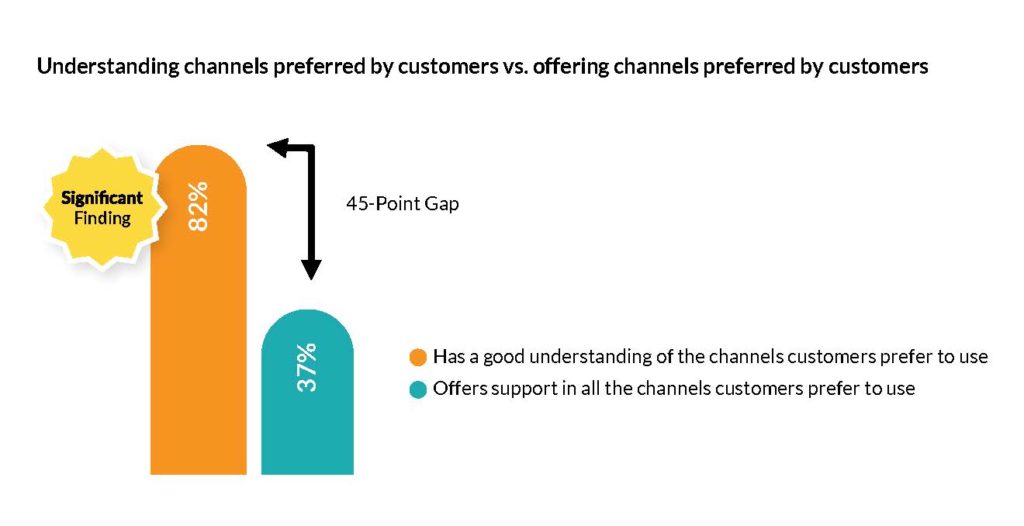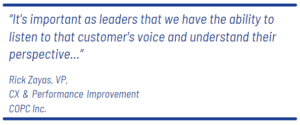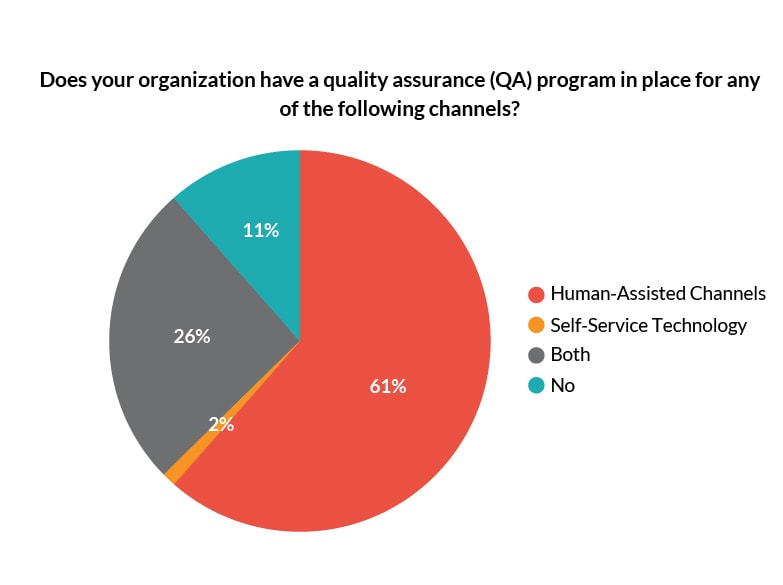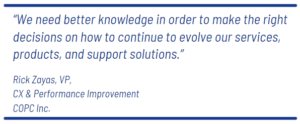
June 16, 2021
Companies are missing the mark on creating a cohesive customer experience, a conclusion revealed in the Customer Experience Management Benchmark (CXMB) Series 2020 Corporate and Consumer Editions.
According to the report, a 45-point gap exists between a company’s understanding of the channels preferred by customers versus the channels actually offered to customers.
Why does this gap exist? And how can the gap be closed?
These were among the questions asked to a group of customer experience (CX) experts in a webinar hosted by COPC Inc. The panelists included Emily Estes from Thumbtack, Julie Weingardt from Turo, Lydia Clayton from Cox Automotive, and Rick Zayas from COPC Inc.
Below is a recap of the webinar with the three most significant findings discussed by the expert panel.
Three Significant Findings from the CXMB Series 2020 Reports

1. There is a 45-point gap between a company’s understanding of the channels that customers prefer to use, and the channels customers truly prefer to use.
Emily Estes, Senior Director of Service and Support at Thumbtack, detailed how the technology company noticed the gap and how they are trying to fill it.

“One of the things we’ve noticed at Thumbtack is that we had a need to educate our consumer on what channels are actually best,” Estes said. “They may have a channel they prefer; for us, that happens to be email. But in our environment, we need a live interaction that’s back and forth, especially because more and more of those requests are actually deep, intense issues that have a lot of complexities to resolve.”
Estes continued to say Thumbtack bridges this gap by educating consumers on the most effective channel in finding a solution instead of a channel they would naturally pick.
Rick Zayas, Vice President of Customer Experience and Performance Improvement at COPC Inc., expressed the disconnect isn’t because organizations aren’t doing enough. Instead, the gap is an effect of the decision-making process from which the channels are chosen.
“It’s important as leaders that we have the ability to listen to that customer’s voice and understand their perspective so that we can design a service experience that meets their needs while still impacting our bottom-line in a positive way,” Zayas said.
“They [the channels] have to be accessible, and they have to be able to perform well in terms of meeting the consumer’s needs. [Each channel must] be able to resolve the reason why [the customer] reached out in the first place, whether they’re reaching out to acquire a service or a product or needing support with a service or product.”
2. Most companies who have a quality assurance (QA) program only measure quality for human-assisted channels, not self-service technologies.
Social-distancing guidelines and other pandemic-related restrictions kept most people at home. As customers avoided large gatherings or in-person interactions, companies quickly expanded their self-service technologies and artificial intelligence (AI) to meet customer needs.
However, while companies heavily leveraged self-service technologies (SSTs) to support their customers, one process was inadvertently left out of the process – a QA program for SSTs.

The report revealed that while 90% of organizations have a QA program for CX, only 28% have a QA program for SSTs.
Julie Weingardt, Vice President of Operations at Turo, expressed that Turo must ensure quality assurance is part of the entire customer journey. Listen to more of what Julie says about Turo’s steps to improve QA in its SSTs.
3. There is a disconnect in the actual effort consumers put forward to resolve a single customer-care issue vs. what companies believe.
A significant finding within the report is that more than half – 56% – of companies don’t know if their customer takes a multichannel journey to resolve a single customer care issue.
One of the reasons for organizations not knowing is a lack of listening mechanisms or measurement mechanisms.
“We’re not capturing enough about [the service journey] experience, and we’re not doing a good job of even listening to unsolicited feedback that consumers are sharing,” Zayas said.

Zayas continued to say that this lack of listening tools should be cause for concern among CX professionals.
“It should really cause some [senior leaders] to not sleep well at night because [they] need that knowledge,” Zayas said.
“We need better knowledge in order to make the right decisions on how to continue to evolve our services, products, and support solutions.”
For Lydia Clayton, Senior Director, Vendor Management at Cox Automotive, the lack of insight into the customer’s multichannel journey is big on their radar.
“This is an area that is important to us as we start looking at aggregating our insights and data and really following the customer journey,” Clayton said. “We’re looking at how to create a connected experience across all of our brands. This is something that’s really big on our radar, but we can’t see all [aspects of the customer journey] today.”
Hear more from Lydia in the video clip below.
Watch the entire webinar to hear more real-life examples from these CX leaders and the major brands they represent.